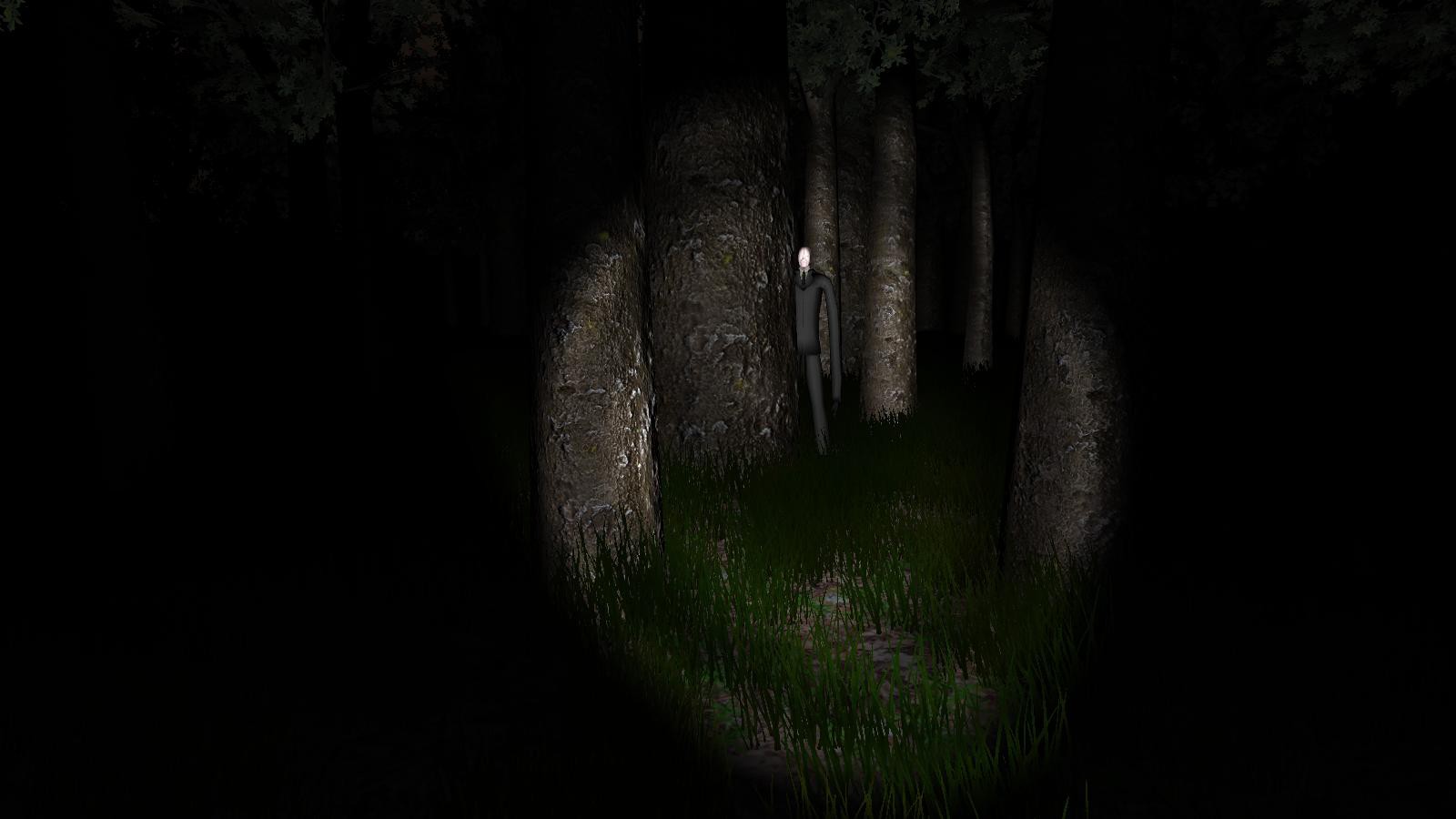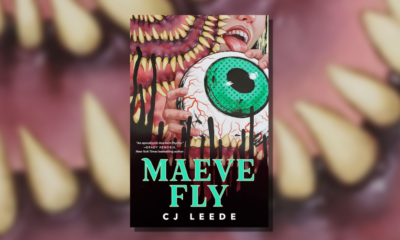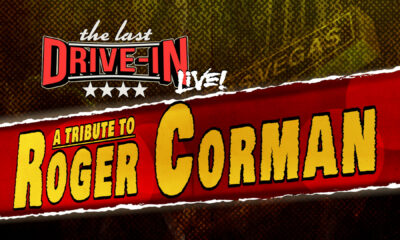
Slender: The Eight Pages • An exercise in futility
More Videos
Published
4 years agoon
By
Jake Neville
Crunching footsteps. Hushed breathing. A click. A torchlight. A dark forest opens before you. Turning around, a wired fence. You are told nothing more than to ‘Collect the 8 pages’. You do so, trekking aimlessly through forest, through farms, through pointless tiled rooms, past abandoned trucks, past strange monoliths until you find a strange note. It says, ‘Always watches, no eyes’. A thunderous drone, the increase in wind. Something is coming for you. Your torch falters.

Indie development at its finest
Slender: The Eight Pages is an incredibly simple game. You follow one objective and have one antagonising force; the Slenderman. Clearly the passion project of one individual, the graphics (even for 2012 on a PC) are haphazard and minimalist, the map relatively small, and the atmosphere is put together with trickery founded by a lack of resources. But, it is for all these reasons that the game stands out for its replayability, accessability, and importance in pop culture history. Game overs are swift, brought on by the ever-increasing presence of the Slenderman whose gaze is to be avoided, but the simplicity of controls (walking, jogging, turning the flashlight on and guiding it, picking up pages) and simplicity of objective and antagonist means that the game can be played and understood by anyone of any skill level at any time.

The mooooooooooooooooooooooood
No other game does so much with so little. Whilst simultaneously disguising the detail-less assets of the world by way of torchlight, the game focuses the player’s characters viewpoint into a central and obstructed frame that heightens the tension of the unknown around them. Featuring barely any story, and a confusing and disorienting map, the player is forced to piece together the nonsense of their situation if they are to have any hope of surviving, thereby forcing them to engage in the game’s horror. This joined with the strength of the games aural environment, built with realistic footsteps, breathing, crickets chirping, and later the inclusion of wind and drones to further indicate the presence of the Slenderman make for a dynamic and engaging environment sure to stay with the player forever. These simple tricks, when used together and in discipline, showcase the lengths to which minimal resources can go.

The Slenderman
Yet in all its praise, the most must go to the man himself; Slenderman. A piece of creepy-pasta, internet quasi-folklore that inspired a real-life near-murder and a spawn of other film and gaming merchandise, the titular character revels in his position of abject terror as relentless pursuer bringing the fear of a collective conciousness to the game. The real fun in the game isn’t in the winning, it’s in the losing. And that’s inevitable. Not only does the game become nigh-impossible by the time the sixth page is collected, but if the eighth is collected, the Slenderman will catch you with his tendrils, your ears will bleed with speaker-breaking static, and the screen itself will glitch out as you stare at the faceless face of Slender… leaving you ready to do it all over again because you have never been that scared in your whole life.
At the end of the night…
The game is a simple rort best enjoyed with friends (my first playthroughs were on the back of my school bus between ten attention-seeking teenagers) to see how they squirm and scream and lose their senses at a painfully simplistic and shallow game. In saying that, the game is just enjoyable alone if you have the guts for it. A solid four out of five Cthulhus for its sheer design alone. More to be read here.
 (4.5 / 5)
(4.5 / 5)
You may like
Gaming
Interview with Creative Director Michael Highland: Let’s! Revolution! @ PAX
Published
4 hours agoon
April 19, 2024
Another game I had the chance to play at PAX East was, Let’s! Revolution!, a Minesweeper-inspired roguelite puzzle game by animation (and now game) studio, BUCK. I talk more about the game itself in another post. Here, I wanted to highlight the conversation I had with Michael Highland, the Creative Director for Let’s! Revolution! and his journey through video game development.
How did you become involved in video game development?
I studied digital media design in college; this was before there were many programs dedicated to game development. After graduating, I self-published a mobile game called Hipster City Cycle with friends. Over the next few years, I slowly got more freelance work as a game designer, and eventually landed a full-time role at thatgamecompany working on the follow-up to their 2012 GOTY Journey. I worked my way up there and was eventually the Lead Designer on Sky: Children of the Light. Working at thatgamecompany opened a lot of doors professionally. I eventually wound up at BUCK, where I saw the opportunity to help establish a new game studio within a very vibrant existing creative culture.
What has been the most challenging aspect of the development process?
Each studio has its own unique issues based on the people involved. There are commonalities like the need to fight feature creep and building consensus around ideas early in the process when all you have is an abstract grey box prototype to react to. At BUCK the biggest challenge has been channeling the abundance of creative energy and talent into a shippable product. There’s a ton of enthusiasm for games within the company, and without clear product-centric goals (who is the target audience, what platform are we releasing on, what’s the marketing strategy), projects have the tendency to spiral out of scope. Another challenge has been building credibility with publishers. BUCK has an amazing pedigree for animation and design, maybe the best in the world, but when we initially pitched ideas to publishers, they all said the same thing: looks great, but until you’ve shipped a game, you’re too high-risk. That’s what led to us self-publishing Let’s! Revolution! Now that we have a well-reviewed game out in the wild, I feel confident we’ll have more luck with publishers.
BUCK primarily has its roots in animation, what led the decision to start branching into video game development?
It started with a general excitement about the medium and a desire among the staff to work on a game. Leadership at BUCK is all about providing the staff with exciting creative opportunities, and getting to work on a game, is, for some, a creative dream come true. And putting BUCK content out in the world is a point of pride and a boost to morale. From a business perspective, the fact we can staff out game projects with the top animation and design talent in the world is a huge advantage. We’re already starting to see new opportunities for the service side of the business based on the success of Let’s! Revolution!
The art, unsurprisingly, is delightful. What were some of the priorities during the character design process and how did those influence the final hero designs?
Our Art Director Emily Suvanvej really led the charge on the look of the game. There are obvious influences like Studio Ghibli, Moebius, and Steven Universe. My shared goal with Emily was to make something together that reflected the diversity of the team’s artistic and lived experiences. The artists put so much love into the character designs and animation, it really shows.
Some of the primary game mechanics take inspiration from Minesweeper, what was the process like to create your own interpretation of those classic mechanics?
This article goes into depth on this topic. The TLDR is that we took a very iterative approach, at each stage trying to identify what was working about the prototype and lean into that. The initial game concept came together relatively quickly in part because our goal for this project was just to finish a game. We just focused on what was good and kept building on it. I wouldn’t say the final game is “perfect” – but we wound up with a much bigger and higher quality experience than I expected by not letting perfectionism get in the way of making good better.
Is there anything else you would like to plug or that you think is important for people to know about Let’s! Revolution! or other upcoming projects?
The music and sound design for the game is stellar. We worked with a creative audio company called Antfood and they knocked it out of the park. The audio got an honorable mention from IGF, which I think is extra impressive because most of the other games were audio-centric titles with some unusual hook to the sound design. For the OST, Antfood reworked all of the music from the game into a continuous flow, like a concept album. It’s so good. I love working with them.
Next in my journey of all the cool games I saw at PAX, Quest Master! Quest Master is a love letter to retro dungeon crawlers and level designers. Taking inspiration from both Mario Maker and the Legend of Zelda franchise, Quest Master promises the ability to play and design dungeons with a variety of enemies, traps, and puzzles.
Check out the Quest Master game announcement here:
I was given a private 30-minute demo, where I got to try out some of the core features in a pre-beta version of Quest Master. This demo was led by one of the developers, Julian Creutz who shared some insight into the game design and user experience. My interview with Julian about Quest Master can be found here.
Quest Master has two main modes, playing dungeons and building them. I got to try out both, though I had a more comprehensive experience playing dungeons. While playing dungeons, the game mechanics were intuitive and simple. However, I was continuously surprised by the complexities offered by the puzzle and logic systems. For example, you can collect a boomerang which is incredibly easy to use. To solve one of the puzzles, I had to throw the boomerang through a torch (which I thought was just decorative) to catch the boomerang on fire and enable it to activate a gem. While the individual mechanics were basic, they combined into a sophisticated puzzle-solving experience.
Immediately, I was eager to look under the hood and see how the dungeon building mode enables the puzzle solving as previously described. Once again, I was impressed with the sophistication of a system with such simple mechanics. The controls for building weren’t intuitive for me, though I also don’t use a controller for much of my gaming (like I was during the demo). Additionally, I could see how it would be really easy to get accustomed to as you build.
As it was a short demo, I wasn’t able to try any of the multiplayer features (i.e. co-op, online map sharing) so I can’t speak to the success of their implementation. As this is supposed to be a large part of the game, I’m wary of wholeheartedly suggesting Quest Master for those interested in the multiplayer experience. However, I was impressed with Quest Master’s modern take on retro dungeon crawlers like the Legend of Zelda games. The graphics and controls feel like much needed quality of life updates for a system taking inspiration from older classics.
I recommend wishlisting Quest Master if you are a fan of old Legend of Zelda games or are looking for a fresh take on the dungeon builder genre. If Quest Master interests you, don’t forget to check out my conversation with Julian too!
 (4.5 / 5)
(4.5 / 5)
Check out my other PAX posts here!
Gaming
Interview with Game Dev Julian Creutz: Quest Master @ PAX
Published
2 weeks agoon
April 4, 2024
As mentioned in previous posts, I had the opportunity to demo a pre-early access version of the game Quest Master alongside the Lead Developer, Julian Creutz. Quest Master is a Legend of Zelda and Super Mario Maker inspired dungeon crawling and building video game. While the other post covers the game itself, this one covers the inspiration and vision for the game as told by Julian.
How did you become involved in video game development?
I’ve been a huge gamer, and especially a Zelda fan, ever since I was a little child when my dad put a GameBoy Advance with “The Legend of Zelda: A Link to the Past” into my hands. Sometime during elementary school I started dabbling with game development using visual tools like Scratch and GameMaker. I quickly got into making Zelda fan games and had dreamt of the day when I would make my own Zelda game one day. Over the years I’ve honed my game development and programming skills, resulting in where I am today.
What has been the most challenging aspect of the development process?
Developing Quest Master is essentially like making two games at once – the making and the playing part. Both of these game elements have to be equally as polished to form a cohesive one.
The most difficult thing by far about the game’s development has been to make the maker mode experience intuitive for first-time users and people who know nothing about Zelda-like games, but at the same time powerful and complex enough to allow creating anything you could dream of.
One good example is the gameplay feature to link certain parts to others, like linking a pressure plate to opening a door. We’ve been through countless iterations affecting both the visual, gameplay and user experience aspects of it – I hope that the one we are using right now is the final one!
Quest Master takes a lot of inspiration from classic dungeon-crawlers like the Legend of Zelda franchise. What about these games was so enchanting to you and how does Quest Master try to capture that enchantment?
As described earlier, I’m like the biggest Zelda fan, which I’m sure shows. My gripe with many Zelda-likes on the market is that none perfectly capture the feel of the classic entries… there’s always something missing.
I confidently believe that Quest Master differs from that greatly. We are trying to make Quest Master feel like an in-house 2D Zelda like Nintendo used to make, just from an indie team like ours. Many people crave the classic 2D entries, just like I do.
What emotions do you hope the player will experience while playing Quest Master? What design choices were made to assist in that desired atmosphere?
A big aspect of Quest Master is its local multiplayer. The game is deliberately designed to work flawlessly with that, and makers can create specialized puzzles in the game that require all players to work together for example. The result is both rewarding, funny, and sometimes infuriating altogether, for example when one of your buddies throws you into a hole.
As a community dungeon maker, what features are you most excited to see implemented in player-made dungeon crawls?
I’ve already been hugely amazed by the creations of the existing Quest Master demo. With all the new features the game will launch into Early Access with, I bet this will be tenfold. I myself always enjoy the brain busting puzzles people come up with. Other things I also like a lot are the unintended mechanics the players find, which dynamically emerge from the many, many gameplay systems working together.
What’s it been like working with Apogee, an indie publisher who goes back to the early 1990’s and has a long legacy of terrific game releases?
I’ve only had very few interactions with game publishers in the past, and Quest Master is my first large scale commercial game project. There’s preconceived notions floating around everywhere on the internet about how evil game publishers are and how much better you would be off self-publishing your game. Contrary to that, working with Apogee has been nothing short of supportive and family-like. They are very invested in the project, and they have many Zelda fans on the team also helps a lot. They are supercharging the potential of Quest Master and without them the game would not be where it is today.
Is there anything else you would like to plug or that you think is important for people to know about Quest Master or other upcoming projects?
Early Access is just the beginning! Quest Master will be hugely expanded upon during its Early Access phase, with many more themes, dungeon parts and entire new gameplay features coming in short intervals and a rapid update schedule. There are always new things around the corner. For example, things like the singleplayer story campaign and the overworld maker will be most likely not be part of the initial Early Access release, but we will make sure to build anticipation by introducing bits and pieces into the world of Quest Master to build up to that.
I hope you are looking forward to it as much as I am!















